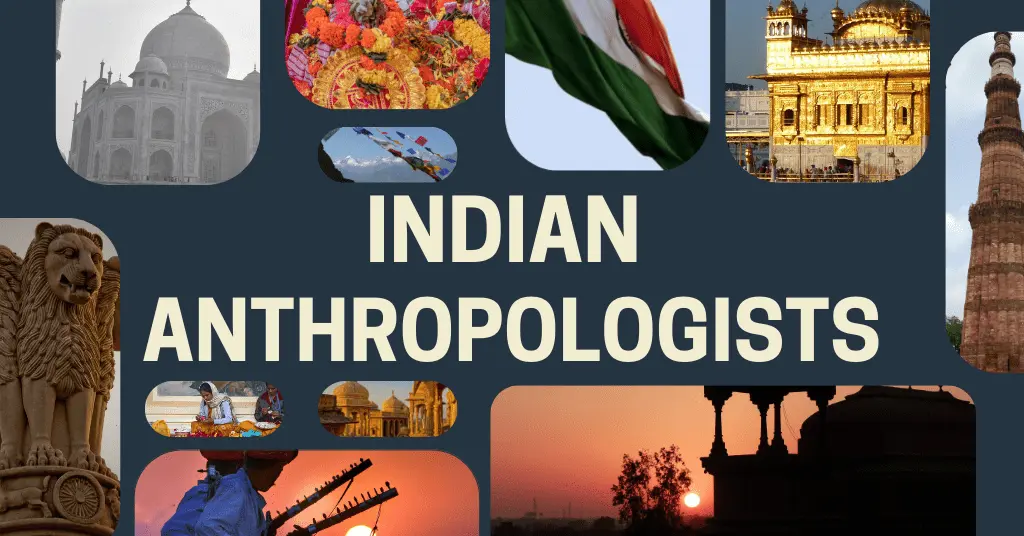AI Answer Evaluation Platform Live Now. Try Free Answer Evaluation Now
List of Indian Anthropologists
Anthropology, as a discipline, has a long and rich tradition in India. The country has been home to some of the most influential and groundbreaking anthropologists of the 20th and 21st centuries. From social anthropology to physical anthropology, from historical anthropology to feminist anthropology, Indian anthropologists have made significant contributions to our understanding of human societies and cultures.

In this article, we present an exhaustive list of Indian anthropologists, including their birth and death years, areas of specialization, and notable works. This list is by no means exhaustive, but rather serves as a starting point for those interested in exploring the rich and diverse field of Indian anthropology.
This list includes some of the most well-known and respected names in the field, such as M.N. Srinivas, Louis Dumont, and Ranajit Guha. It also includes lesser-known but equally important figures like Nirmal Kumar Bose, Bharati Mukherjee, and P.S. Nair. The areas of specialization are equally diverse, ranging from social and cultural anthropology to physical anthropology and historical anthropology.
| Name of Anthropologist | Born | Died | Specialization | Notable Works |
|---|---|---|---|---|
| Ghurye, G.S. | 1893 | 1983 | Social Anthropology | Caste and Race in India |
| Bose, Nirmal Kumar | 1901 | 1971 | Physical Anthropology | The Dynamics of Human Biology |
| Karve, Irawati | 1905 | 1970 | Social Anthropology | Kinship Organization in India |
| Dumont, Louis | 1911 | 1998 | Social Anthropology | Homo Hierarchicus, From Mandeville to Marx |
| Sankhdher, B.M. | 1913 | 2005 | Social Anthropology | Social Change in a Village in Northern India |
| Srinivas, M.N. | 1916 | 1999 | Social Anthropology | Village, Caste, Gender and Methodology |
| Ghosh, A.B. | 1920 | 2014 | Social Anthropology | The Village Community and Modernization |
| Lienhardt, Godfrey | 1921 | 1993 | Social Anthropology | Divinity and Experience |
| Dube, S.C. | 1922 | 1992 | Social Anthropology | Indian Village |
| Guha, Ranajit | 1923 | 2002 | Historical Anthropology | Elementary Aspects of Peasant Insurgency |
| Bhattacharya, N.N. | 1924 | 2014 | Social Anthropology | Political Structure and Change in a Tribal Society |
| Chattopadhyay, Nirmal Kumar | 1924 | 1996 | Social Anthropology | Anthropology and Sociology |
| Jain, Dhaneshwar | 1926 | – | Social Anthropology | Indian Family System |
| Klass, Morton | 1927 | 2001 | Social Anthropology | Ordered Universes: Approaches to the Anthropology of Religion |
| Ramaswamy, E.A. | 1927 | 2020 | Social Anthropology | Rural Change in India |
| Kumar, Radha | 1929 | – | Cultural Anthropology | The History of Doing |
| Nair, P.S. | 1929 | 2000 | Social Anthropology | Agrarian Change and Peasant Studies |
| Ramanujan, A.K. | 1929 | 1993 | Cultural Anthropology | The Interior Landscape |
| Beteille, Andre | 1930 | – | Social Anthropology | Caste, Class and Power |
| Pocock, David F. | 1933 | 2013 | Social Anthropology | The Anthropologist and the Native |
| Mukherjee, Bharati | 1940 | – | Feminist Anthropology | The Dark Side of the Moon |
| Chakrabarti, D.K. | 1941 | – | Physical Anthropology | Human Biology and Social Inequality |
| Das Gupta, Uma | 1941 | – | Economic Anthropology | The Peasant Family and Rural Development in India |
| Narayan, Kirin | 1945 | – | Cultural Anthropology | Storytellers, Saints and Scoundrels |
| Mitter, Partha | 1947 | – | Social Anthropology | Much Maligned Monsters |
| Pandey, Gyanendra | 1949 | – | Historical Anthropology | The Construction of Communalism in Colonial North India |
| Chakravarti, Uma | 1950 | – | Feminist Anthropology | Rewriting History |
| Prakash, Gyan | 1950 | – | Historical Anthropology | Another Reason |
| Sundar, Nandini | 1967 | – | Political Anthropology | Subalterns and Sovereigns: An Anthropological History of Bastar (1854-2006) |
The contributions of these Indian anthropologists have not only enriched our understanding of India and South Asia but also have helped to shape the discipline of anthropology more broadly. Their work has contributed to our understanding of caste, gender, race, religion, and the politics of development, among other topics.
Overall, this article highlights the rich tradition of Indian anthropology and the contributions made by its practitioners to the discipline as a whole. It also serves as a resource for those interested in learning more about the field and the key figures who have shaped it.



